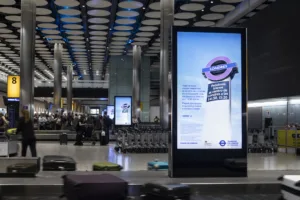by Silvio Peruci, Managing Director at App Radar, an app store marketing platform
While traditional retailers were battling these pressures, an opportunity arose for startups disrupting the status quo. One area that has taken advantage of this opportunity is the speedy grocery delivery sector. £9.8bn of investment has been pumped into this hot new market globally according to PitchBook, with Turkish-based Getir valued at $2.6bn in its most recent funding round and UK-based Dija raising $20 million in seed funding in December.
When looking at the numbers in terms of app downloads, this market is buzzing. Getir has acquired over 12.5m users in 2021 via Google Play alone, while German startup Gorillas has secured 1.4m global downloads since launch in 2020. Flink (1m) and Gopuff (1.3m) have also added users quickly in their markets in 2021.
And it is not just the fast delivery sector that is booming. We are actually observing a balkanisation of the grocery delivery sector as well as the emergence of ethical food companies as an alternative to the big players.
A need that came out of the pandemic or is fast-delivery here to stay?
The big question though is whether these newcomers are a long term threat to established supermarkets or simply a fad?
There’s a few things to consider. First, we have only really experienced ‘normal’ market conditions in the UK for the past three months. As such, consumer behaviour is most likely still in a state of flux. We don’t know if we will ever fully return to pre-2020 conditions. What we do know is that in 2022 user growth for these grocery apps has slowed. We also know that during the pandemic, established grocery chains also saw a boom in new users – during the height of the pandemic, between the beginning of March 2020 and April 2021, Tesco added 1.2m, Sainsbury’s 507k, Asda 964k and Morrisons 530k.
And finally, we need context. It’s easy to forget that for all the hype an individual supermarket chain like Tesco dwarfs the entire fast delivery industry both in terms of user base and resources. The sector as a whole has to do a lot of catching up. With VC funding rates falling quickly, they may not have enough time to close the gap.
Retailers are treading unchartered waters
That’s not to say that the fast delivery industry doesn’t pose any threat to established retailers. The mere fact that many of them reacted last year by seeking to increase the speed and availability of their online deliveries speaks volumes. Overall sales are also declining. According to NielsenIQ total sales at UK supermarkets fell 4.1% in March as inflation and cost of living concerns continue to grow. Which is why consumers will be looking for the best price and the retailer that offers the most convenience. So while the fast-delivery newcomers may not be an immediate threat to the big players, smaller retailers are definitely exposed. This is why now is the time to make sure your app is offering the best user experience to both retain and acquire users.
To stay ahead of the curve, there are a few areas retailers and delivery businesses should look at to make sure they are on top of their app game.
ASO or App Store Optimisation is the SEO but for the app store. It is a way to increase the opportunity for downloads and user engagement for your app directly through the app store itself. About 67% of app downloads come from organic app store search so it is vital your marketing strategy includes an ASO strategy.
Make sure mobile A/B testing is part of your ASO strategy. This will help you build the most converting app store listing. The idea behind app store testing is to create one or more variations of your current store listing, split your audience to visit these variations, and see which one has the best performance. You can experiment with several aspects of your store listing.
Unfortunately, having an amazing app with the best keywords will not be enough. You need a winning marketing strategy to go alongside to boost your app’s success and build a solid customer base to secure lasting growth. Paid user acquisition has the potential to bring in a huge return on investment through highly targeted advertising focused on a relevant customer base. It can also be tailored toward new and first-time users and re-targeting return customers to support consistent growth.
A post-pandemic inflation and recession may mean uncertainty but uncertain times often create the perfect environment for innovation. Which sector will innovate the most with their app? Will traditional supermarket apps maintain their leading position or will fast-delivery apps outgrow them? Time will tell!









